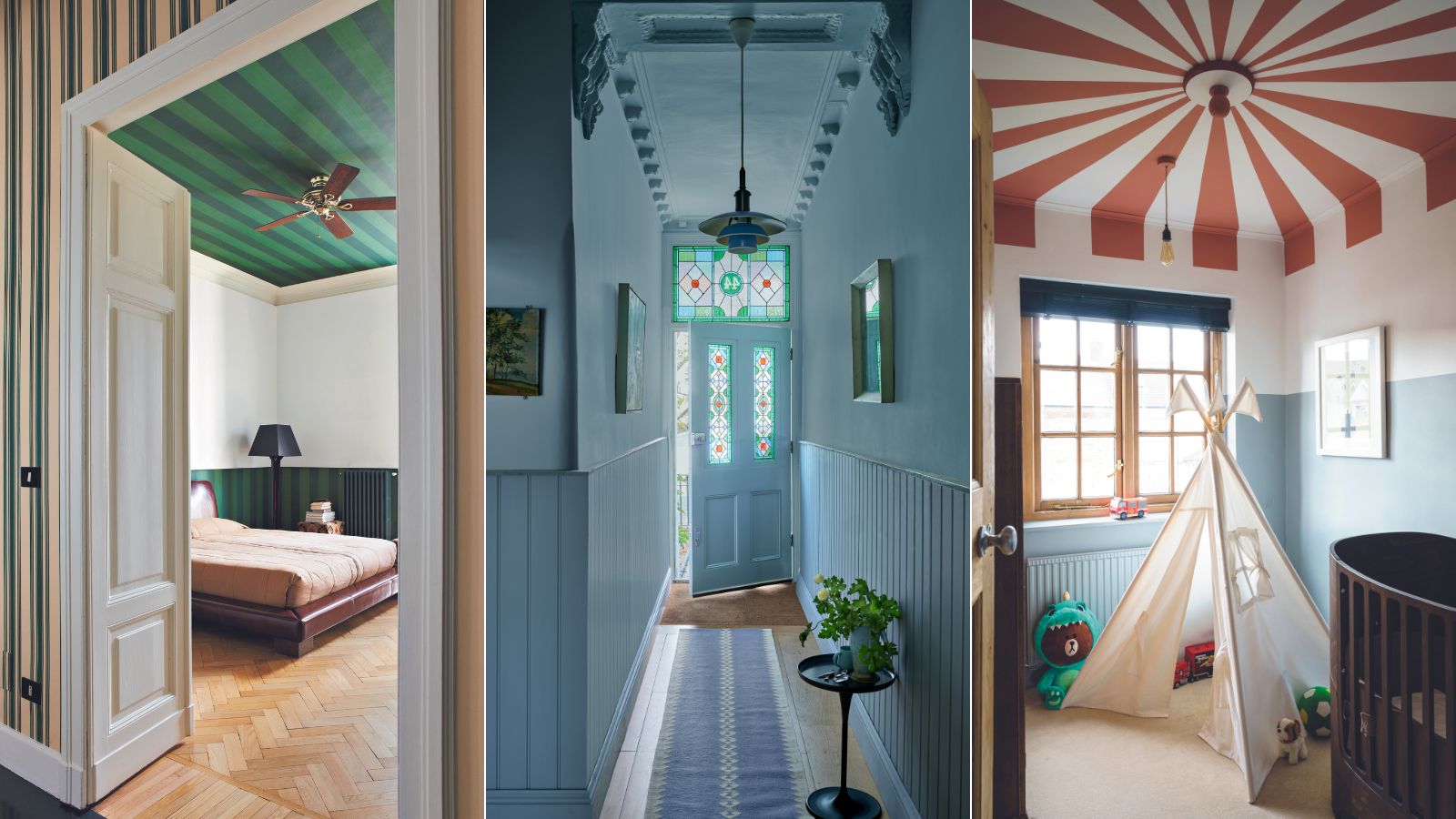
The ceiling, or fifth wall as it is more recently being referred to, is a surface often overlooked in favor of a simple lick of white paint. But when given the proper consideration it deserves, can really help to transform a space.
When it comes to choosing between all the color trends out there to truly nail a color scheme for an entire home, it's often just the four walls of each room we're considering for paint ideas and wallpaper ideas. But experts all agree, that's a huge mistake. Recently a shift has taken place, declaring accent walls out of style in favor of color drenching and something equally as exciting: the accent ceiling.
'Most of us default to a white ceiling, but this can be a hugely missed opportunity to add another layer of design to a room. Looking at the fifth wall as an accent can provide a stunning point of interest and enhance your room design,' says Patrick O’Donnell, color consultant and brand ambassador at Farrow & Ball.
So, how bold are you feeling? Here, we dive into why interior designers and color experts are encouraging you to create an accent ceiling in your home – and the most on-trend ways to do so.
5 Ways To Embrace The Accent Ceiling

'Ceilings rarely get the attention that walls do, but in the right space, an accent ceiling can be super fun and chic and a way to bring color into a space without overwhelming it,' says interior designer Kathy Kuo. 'Especially when paired with a really special statement light fixture, a color-pop or wall-papered ceiling has the potential to cast a unique glow over the whole room!'
If you search for DIY projects to upgrade your home or apartment, you're going to be hit with a lot of results recommending accent walls. And while they do add a certain level of depth to a space, an accent wall is a surefire way to make your home look dated in 2024.
A singular statement wall can look unfinished, and creates harsh contrasts between your painted, papered, or paneled wall, making the space appear more confined. The total opposite to the expansive and cocooning feel of a color-drenched room. A decorative ceiling, however, doesn't provide that random, half-done feeling that an accent wall does as the ceiling covers the entirety of the space.
'When considering your design scheme, including the ceiling has become increasingly important and has a big impact on how the room will feel,' advises Ruth Mottershead, creative director at Little Greene. 'It is often the largest expanse of pattern or color you will have in a space, so it will have a big impact. Don’t be afraid of replacing the accent wall with an accent ceiling, it is a great way to finish off the look of a room, create instant impact, and ensure the space feels loved and considered.’
1. Take your wall color across the ceiling or crown molding

Extending wall color up and over your ceiling isn't a new idea, but one that is increasingly being used by interior designers to create a cohesive and enveloping effect in the room. It blurs the boundaries, making the room feel bigger and more connected.
'Use one color all over the ceiling and trims for a color-drenched haven - this is one of the most useful color applications, especially if your ceiling height feels low,' advises Patrick O'Donnell, color consultant and brand ambassador at Farrow & Ball. 'It will remove the visual contrast where the wall stops, and ceiling begins and accentuate a seamless flow in your room.'
'This look works especially well with a strong color or bold print on your walls,' adds Patrick. 'It will make the room feel more cohesive, especially if you carry the same color over the ceiling as on your woodwork.' This is especially effective in smaller spaces, where a seamless flow of color eliminates visual interruptions, resulting in a more expansive feel. It's like wrapping the room in a color cocoon, creating a sense of unity.
2. Alternatively, use paint to create a color pop
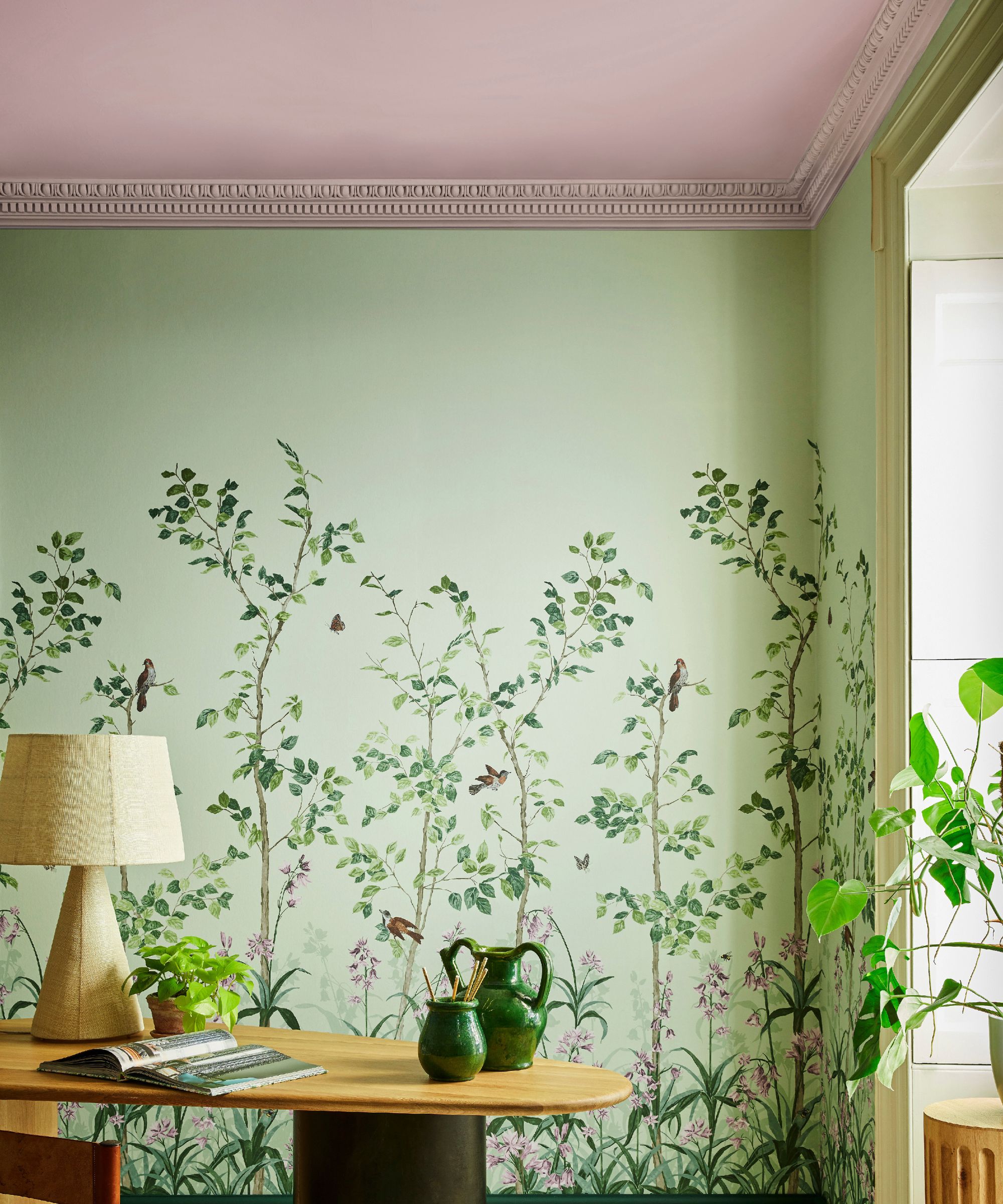
Choosing a bold and contrasting color for your ceiling is like giving your room an exclamation point. This approach allows you to create an unexpected focal or accent point, without overpowering the entire room. Whether it's a rich jewel tone or a subtle pastel, the key lies in selecting a hue that complements the existing color scheme while still making a statement that draws the eye upward.
'We have been seeing a trend of people keeping walls neutral and adding pops of color on the ceiling in lieu of an accent wall,' notes Ashley McCollum, GLIDDEN® paint by PPG color expert. 'We’ve seen this done well in many areas of the house, but my favorite places for this trend are an office or playroom. Be sure to use a color that contrasts with the walls! Light walls = deep ceiling,' she advises.
3. Pick the right shade for your space

Warm tones like deep reds or oranges can add coziness and intimacy, making larger rooms feel more inviting, while cooler tones like blues and greens can create a serene and expansive feeling. Not only that, but dark colors recede, meaning that going for dark tones on your ceiling can actually make it feel further away.
'Ceilings are often an afterthought and painted white by default. However, they actually play an important part in the feel of a room,' says Helen Shaw, director of marketing at Benjamin Moore. 'For a bold look use a dark color that will imitate the "more is more" ethos. The high level of contrast offers a dramatic feel and works exceptionally well in a room with high ceilings,' she advises.
4. Try wallpaper to introduce pattern and print
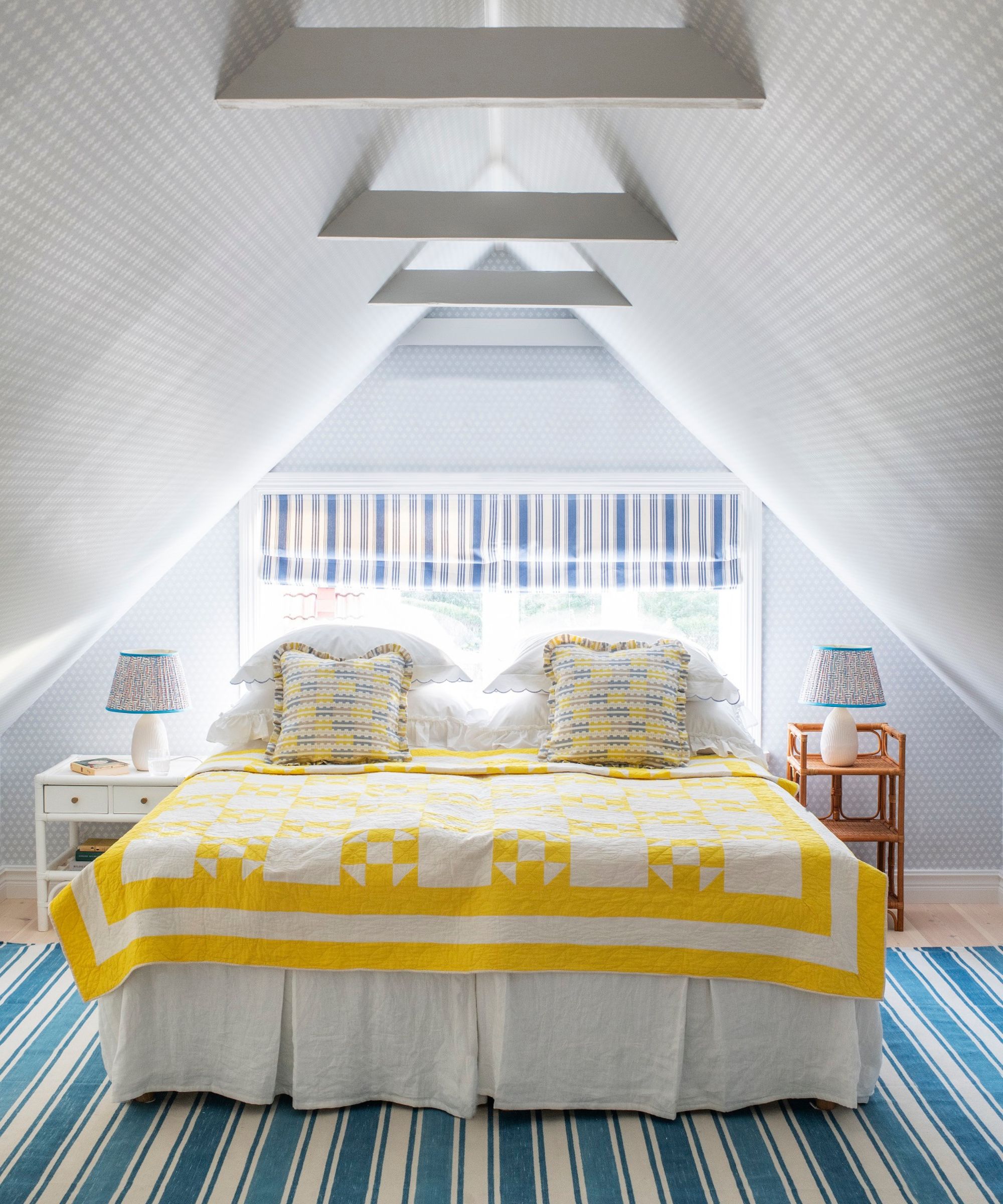
The ceiling presents a great opportunity to decorate with patterns and color. 'Turn expectation on its head and use wallpaper to highlight ‘the fifth wall’ and draw the ceiling into the conversation to create a statement look,' suggests Benjamin Moore's Helen Shaw. 'Pair with a paint color that picks up the hues used in the wallpaper to anchor the scheme and tie the room together, creating a space that is coherent and pleasing to the eye,' she advises.
'It’s a tricky game applying wallpaper to a ceiling as you don’t want anything too heavy that’s going to make the ceilings bare down on you,' says Minnie Kemp, design director at Firmdale Hotels. 'I always endeavor to make a room feel bigger and fresh, if the ceilings are low you can try to emulate the sky by adding a soft blue wallpaper like The Mind the Gap x Minnie Kemp “Samoa“ wallpaper.'
In rooms with lower ceilings, strategically chosen wallpaper can create the illusion of height, and vertical stripes, for example, can elongate the visual perception of the space, making it feel more expansive.
'If you have an attic room with low tricky ceilings, you can often disguise it by using a fabulous bold pattern on the walls and the ceiling,' adds Minnie. 'I’m working on a scheme using stripes on the walls and the ceiling of a bedroom, it should look like a circus tent when it’s finished. The woodwork will be a fresh white to break it up and create a tailored finish. When using wallpaper on a ceiling, the paintwork for the molding and woodwork needs to be considered either to match the wallpaper or stick with a fresh neutral so the scheme doesn’t become too busy,’ she advises.
5. Have fun with wallpapered stripes
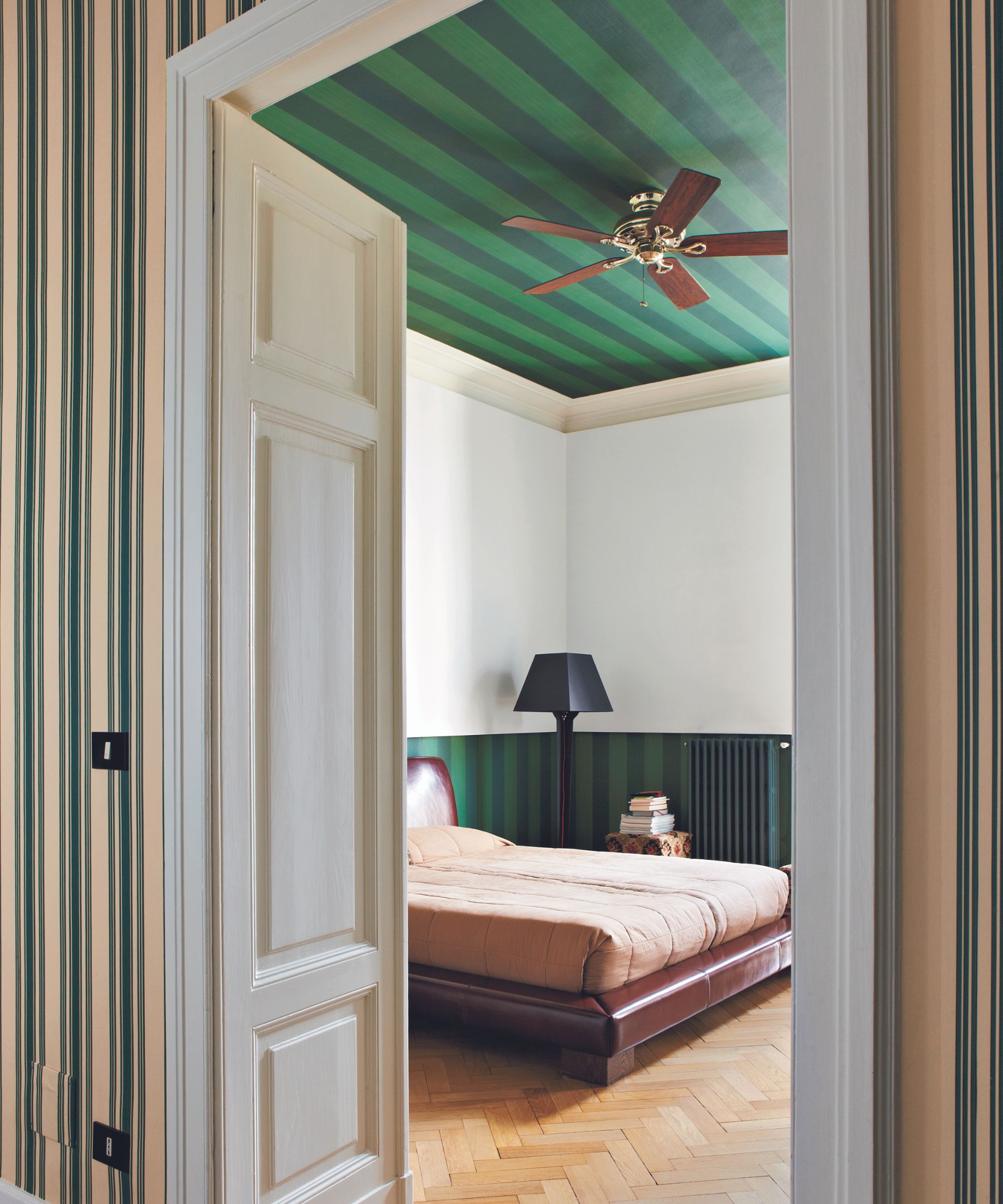
Decorating with stripes is both fashionable and fun. But have you ever considered a painted or wallpapered stripey ceiling? Not only are they incredibly playful, but they can also help make your room feel bigger. Horizontal stripes on the ceiling can visually widen the space, while vertical stripes maintain an elegant and lofty feel. It's a clever way to manipulate the perception of dimensions.
Stripes on the ceiling can be a bold design statement or a subtle touch, depending on the scale and color palette. For a contemporary vibe, consider wide, contrasting stripes in monochromatic tones. Alternatively, delicate pinstripes can introduce a traditional touch.
Emilie Munroe of Studio Munroe says: 'The key is to create visual balance with the items on the floor below. If you have a large-scale patterned rug, create a balance by selecting the most prominent rug color as the accent ceiling color.'
6. Or have a go at painting them yourself
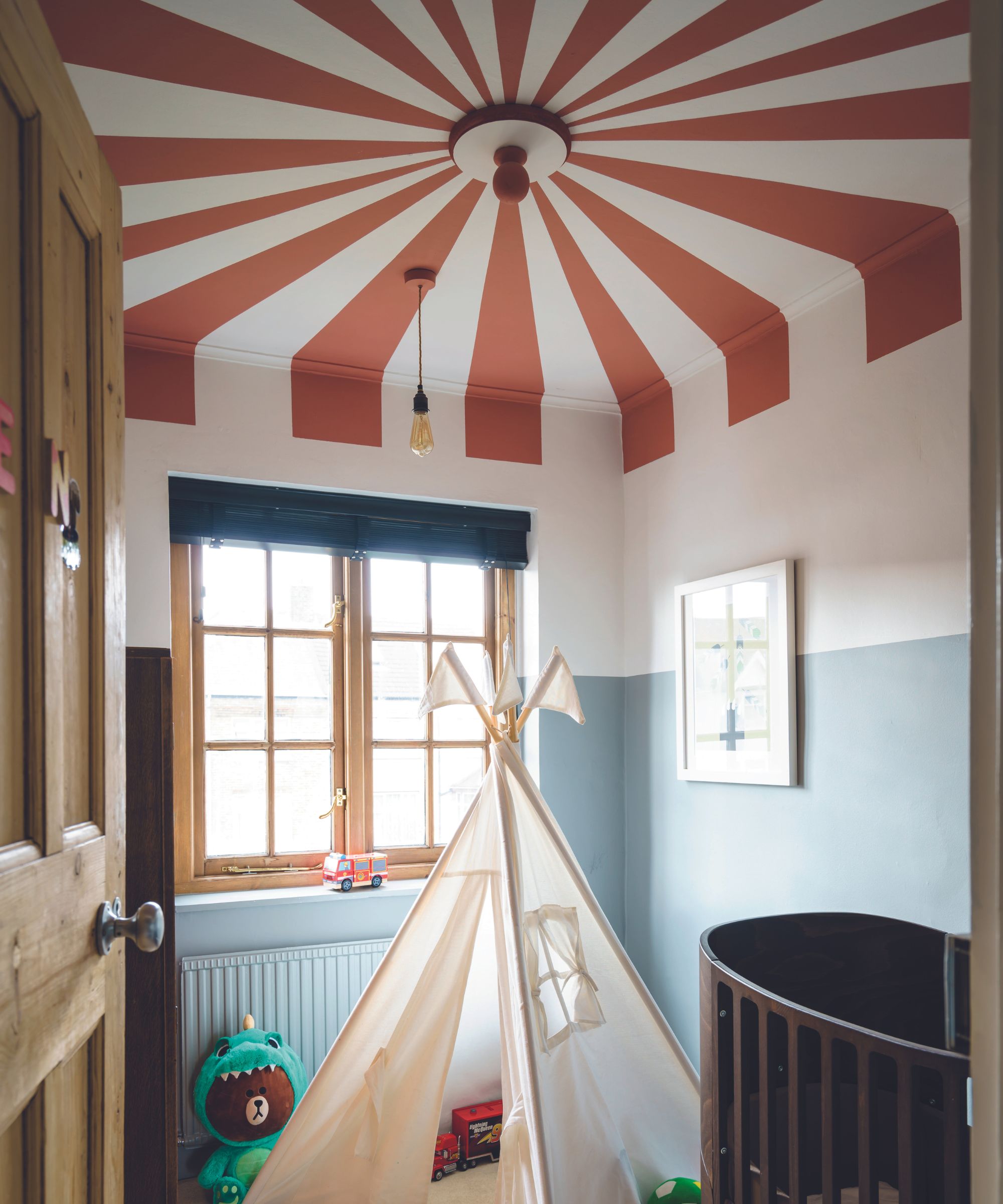
For those who prefer a hands-on approach, painted striped ceilings offer a DIY-friendly and customizable solution. Experiment with different stripe widths and colors to achieve the desired effect, whether it's a bold and graphic statement or a subtle, tonal stripe.
'If you’re feeling brave, painting stripes across the ceiling makes for a characterful bedroom decoration with a huge impact,' suggests Farrow & Ball's Patrick O’Donnell. 'To cocoon a room, bring your ceiling color or pattern down over the top part of your wall to roughly picture rail height [as seen above]. This technique will reduce the height in a room - especially if the space is tall and thin - creating better proportions,' he suggests.
7. Go for a high-shine, reflective gloss
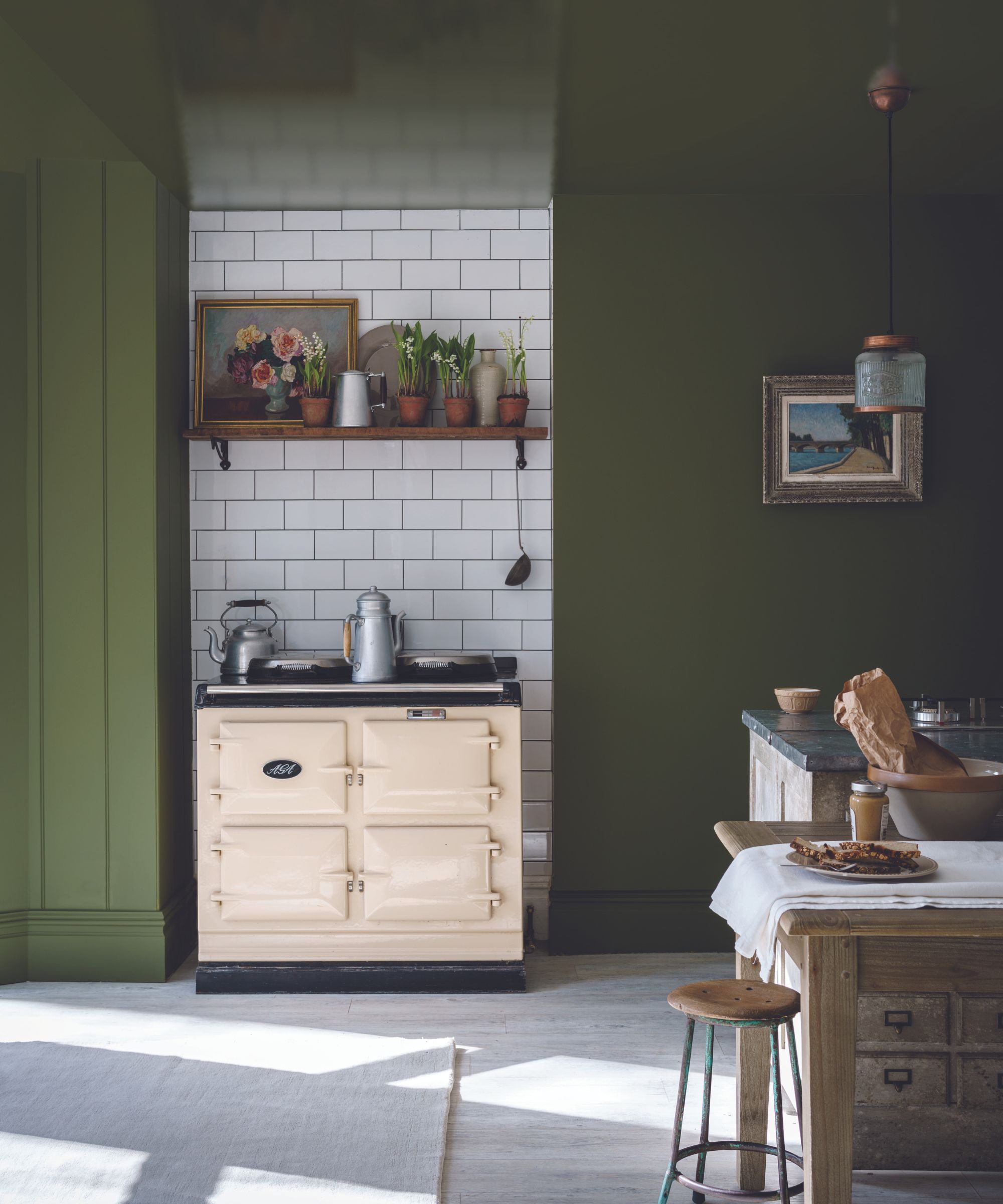
For a touch of high-shine opulence, consider taking the same color as your walls over the ceiling but in a reflective glossy finish. Gloss paint will not only create a statement but amplify light within the space thanks to its sheen, making even the smallest of rooms feel bigger and brighter. A great choice for spaces with limited natural light.
'Use a different finish on your ceiling, such as high gloss, for a sophisticated accent that will bounce light around the room,' suggests Patrick O'Donnell. 'Opt for a neutral shade or heighten the drama in a rich color like Bancha [seen above] or Brinjal from Farrow & Ball.'
Additionally, the shiny quality of a gloss ceiling can be used to highlight architectural details and decorative elements. The gloss will throw a spotlight on intricate molding, accentuating the intricacy of the design.
'We love to play with painted ceilings to help make a space feel bigger and taller,' adds Dan Mazzarini, principal and creative director of BHDM Design and ARCHIVE by Dan Mazzarini. 'It instantly adds height and volume to the space. Another way to make a statement is to layer different intensities of the same hue. Lighter blue walls with a darker ceiling, for instance, create volume. The darker color creates a receding illusion to make the room appear bigger,' he suggests.
'An accent ceiling utilizes a typically untouched part of a room and creates another opportunity to add interest, color, texture or movement to a space,' concludes Kristina Khersonsky, founder of Studio Keeta. So what do you think?
From extending wall colors to experimenting with patterns and the reflective brilliance of gloss, we've uncovered a myriad of possibilities for transforming an overlooked ceiling into a dynamic focal point. There is endless inspiration out there, so if you're feeling empowered to take on an accent ceiling let this be your starting guide to embracing the fifth wall.







